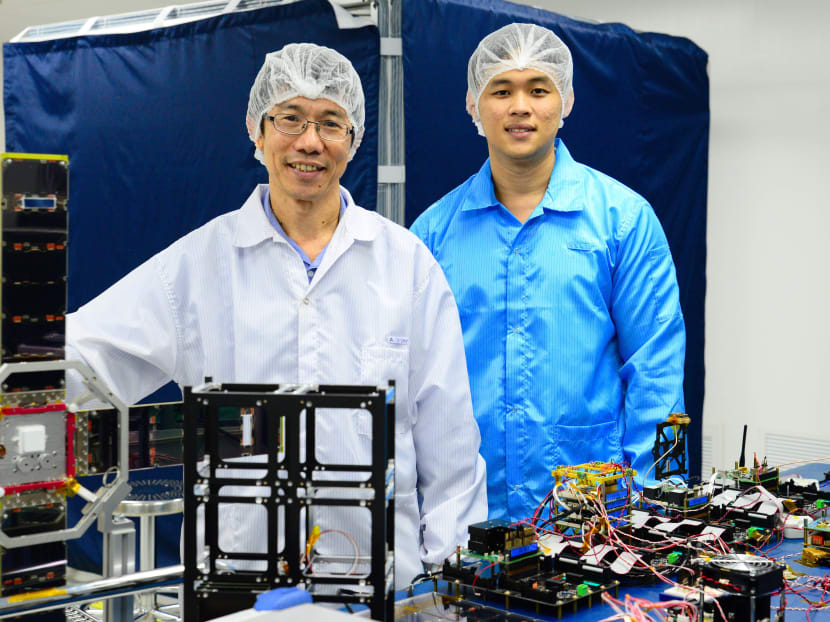NTU to launch two satellites into space next year
SINGAPORE — Nanyang Technological University (NTU) will launch two satellites into space next year: Singapore’s first climate satellite and an experimental communication satellite carrying technology that, if proven successful, may see low-Earth-orbit satellites being able to transmit data from anywhere above the planet.

NTU Assoc Prof Low Kay Soon (left) with research engineer Lau Zi Rui, with the chassis of Velox-II and its internal components on the laboratory table. The Velox-I, an older model which has completed its mission in space, is on their right. Photo: NTU
SINGAPORE — Nanyang Technological University (NTU) will launch two satellites into space next year: Singapore’s first climate satellite and an experimental communication satellite carrying technology that, if proven successful, may see low-Earth-orbit satellites being able to transmit data from anywhere above the planet.
Currently, most low-Earth-orbit satellites, such as NTU’s, are able to transmit data only if the satellite is in range of their ground station — which is about 2,000km for NTU satellites.
If this technology — developed by Addvalue Innovations, a subsidiary of local firm Addvalue Technologies — works in space, it would mean low-Earth-orbit communications will not have to be constrained by rigid time schedules based on the satellite’s orbit and placement of earth stations.
The communication hardware will be carried on NTU’s new 12kg satellite, called VELOX-II.
The two new satellites, now being built, will also adopt some of the technologies successfully tested in two recent satellite launches — VELOX-PII, a pico-sized satellite built by NTU undergraduates, and its bigger brother VELOX-I.
The other satellite, named VELOX-CI, weighs 130kg and will be used to study tropical climates. It is funded by the Economic Development Board.
Using a special technique known as radio occultation and advanced algorithms, VELOX-CI will be able to obtain weather data such as upper atmospheric temperature, humidity and pressure, which are useful for long-term climate studies.
Associate Professor Low Kay Soon, director of NTU’s Satellite Research Centre, said: “The success of the NTU satellites validates the expertise of our satellite engineers, giving us the confidence to integrate our new knowledge into building more advanced satellites, which will help Singapore in its quest to establish a space industry.”
When the two new satellites are launched from India in the fourth quarter of next year, NTU will have a total of six satellites in space.






